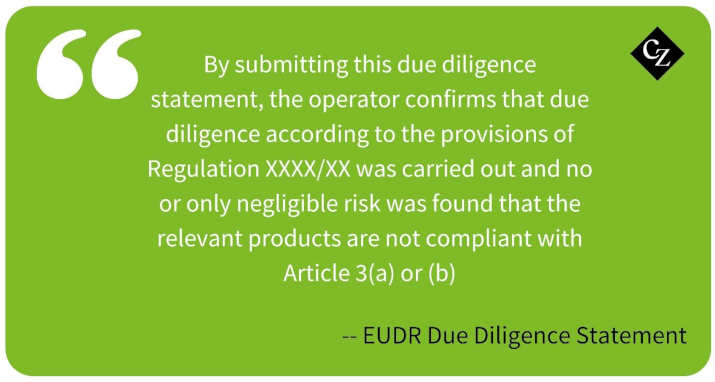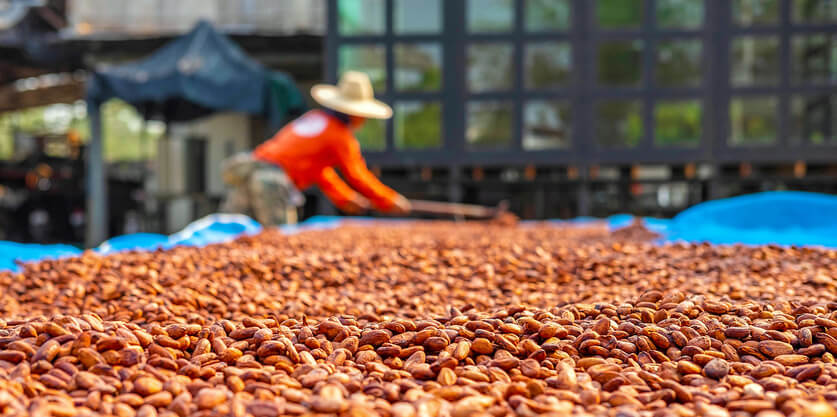Insight Focus
The European Commission’s EUDR regulations will come into force at the end of this year. This will force importers of certain commodities to provide full traceability. But there are several issues with the regulation that could further restrict cocoa supply.
What is EUDR?
European Union Deforestation Regulation (EUDR) is a regulation which prohibits products from entering the EU market unless they are deforestation-free and legally produced. It will also be illegal to export such products from the EU.
The EUDR applies to wood, palm oil, soy, coffee, cocoa, rubber and cattle, as well as most of the derivatives. Under cocoa, this would apply to beans, products and chocolate.
The regulation entered into force on June 29, 2023, with an 18 month preparation period that will expire on December 30, 2024 when it fully enters into application. The original proposal to establish a regulation was put forward in 2018 and the final wording of the regulation was available in December 2022. This means companies have had plenty of time to get ready.
The Regulation
The regulation requires the operator, defined as the entity that places the relevant goods on the EU market, to issue a due diligence statement (DDS) for each parcel that is crossing the EU customs border for both import and export.

- Article 3(a) stipulates that the products must be deforestation-free since December 31, 2020
- Article 3(b) stipulates that they have been produced in accordance with the relevant legislation of the country of production. This “relevant legislation” includes land rights, labour rights, human rights, and laws relating to indigenous people, tax and corruption to name but a few. This means this regulation is not just about deforestation.
Each DDS must state the Harmonized System code (HS code) of the product being placed on the market, which for cocoa includes cocoa beans, products and chocolate.
Each due diligence statement must be accompanied by polygons of all farm plots above 4 hectares and geolocation of six decimal places longitude and latitude of farm plots below 4 hectares that contributed to the parcel.
The due diligence statement is created on the EU information system where the geolocations and polygons are uploaded. The relevant product has to be traceable to the farm plot.

Each origin will be benchmarked for risk and grouped into “low”, “standard” or “high” categories. From there, 9% of all parcels from high-risk origins will be inspected and 9% of operators placing products from high-risk origins onto the EU market be inspected. The inspections for low-risk origins are far less thorough, at 1% and standard-risk origins will attract just a 3% inspection rate.
In addition, a substantiated claim can be issued, triggering a further inspection. This will be the vehicle that the activist NGO’s will use.
Each EU member state will establish a National Competent Authority (NCA) to implement the regulation. The principle of the regulation is that it is based on the reversal of the burden of proof. Therefore, without evidence that there is no or negligible risk of deforestation having occurred after December 31, 2020 or that there has been illegality in the producing country then the parcel and the operator are guilty.
A non-compliant parcel will be seized and/or a fine could be issued of up to 4% of the prior year’s EU turnover of the operator.
The Impact on Cocoa
Approximately 60% of the global cocoa crop crosses the EU customs border. Some is re-exported but even so would be required to comply with EUDR. Even if a parcel is shipped via a third country (Malaysia, Singapore, Indonesia for example) traceability to farm plot is still required.
Cocoa has many HS codes due to its huge list of raw ingredients, from beans, waste (such as shells), liquor, butter, cake, powder and chocolate. Each of these are relevant products under the regulation.
This means that 60% of the global crop will have to be traceable to farm plot and have no or negligible risk to non-compliance to EUDR by the 2024/25 main crop (October 2024). Anything crossing the EU customs border by December 31, 2024, will be subject to the regulation.
The sourcing of cocoa is split between direct and indirect or third-party supply chains. Direct means that the cocoa comes to the operator via aggregators in the origins where the operator has operations. These aggregators and farmers often have existing sustainability programs with data on farmers, farms and traceability. Indirect sourcing is supplied from international trade and tends to lack data and traceability.

The percentage of direct versus indirect cocoa supplied to the market is approximately 50:50. There is demand for directly sourced cocoa from destinations outside the EU because of sustainability programs so this volume cannot be allocated to cover EUDR demand.
It is estimated that 25% of the world’s third-party supplied cocoa will have to comply with the EUDR. This is a significant percentage of the market that will struggle.
Many sustainability programs concentrate on Ivory Coast and Ghana and those outside of this network will be starting from scratch to create the due diligence and traceability required to prove compliance.
System Throws Up Challenges
Unfortunately, the EU Commission has been unable to complete all its required tasks in advance of the regulation entering into application. For one, it has delayed the risk benchmarking of each country until after entry into application, which means all countries will be considered standard risk.
If a country is rated standard or high risk, they must collect data, assess risk and mitigate risk. Conversely, a low-risk country only needs to collect data. This delay will therefore punish low risk country operators who will have to do more work — through no fault of their own — pending the completion of the benchmarking.
The set up of the information system is also in the hands of the Commission. It has already conduced a far from successful pilot. One of the main concerns was the lack of an API for operators to download DDS data directly to the system. After much negotiation, it was agreed that this would be added but with no clear time frame.
These challenges have led to a group of EU member states to call for the application date to be delayed. At this stage, it is very difficult to predict whether the Commission will decide to do so or not. However, we do
know that any decision to delay the regulation will be made around September or October. This means that if implementation is not delayed, there is the risk companies won’t be ready with one to two months to go to the launch date.
The regulation is a complex, product related, legislation only really seen in the EU under European Union Timber Regulation (EUTR) in the past. As a result, there are multiple interpretations of the articles and clauses. This is complicated by the seven very different supply chains of the relevant products, from cocoa to cattle with rubber, palm oil, soy, timber and coffee in the middle.
Prior to EUDR, cocoa could be bought under an FCC contract with the main concerns being about contract default, shipment delay, weight loss and quality and other minimal issues. EUDR presents a risk that represents 100% of contract value. This changes the game.
Concluding Thoughts
- Demand for EUDR compliant cocoa is highly likely to exceed supply, especially in the third-party supply market over the next couple of years.
- Does this mean that there will be further complications in an already extremely volatile cocoa market? Will we see a two-tier market for compliant versus non-compliant cocoa?
- There are initiatives like ICE COT to help try to maintain the tradability of cocoa. This works by establishing a platform for shippers and operators to log data prior to a shipment and sale so that the data can be validated. This will enable the data to be passed on to a contracted counterparty at the time of a sale.
- There is a lot of water yet to pass under the bridge, but one thing is certain: this will change cocoa sourcing forever.
- There are implications for other commodities too as the regulation is likely to be expanded to include ingredients such as sugar.














